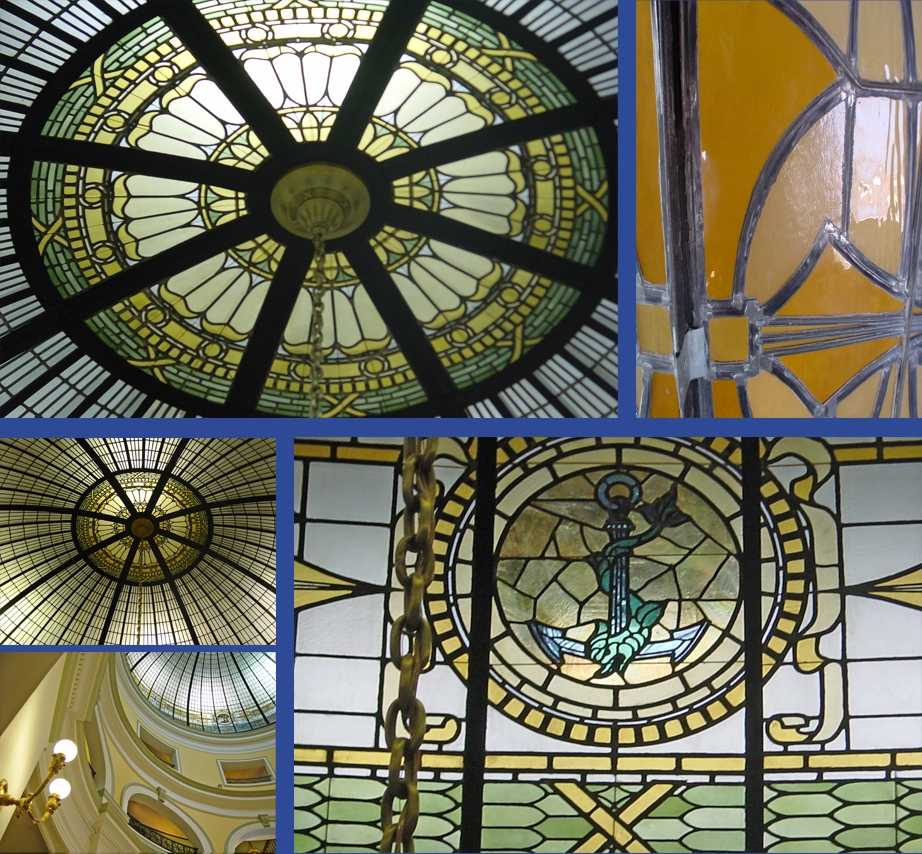Saving an Old Lady
This 30 foot stained glass and lead dome was restored by Dennis Kowal Architects in concert with the entire building restoration.
The lead and glass dome was in such poor condition, the Owner had installed a plywood ceiling to catch the falling glass and to protect the public. Dennis Kowal Architects (DKA) saved the dome from an uncertain fate with a full historic restoration plan. The dome constructed in 1910 is located at the center of Winchester, Virginia; a city that changed hands 70 times during the Civil War.

Years of neglect resulted in bird, dust and pollution deposits on the back of the dome rendering the dome a dark, streaked mess.
Scaffolding was erected above to clean, replace, repair and reinforce the high vaulting dome. Over 5,000 individual panes were inspected, identified and restored per instructions specific to each condition. Many of the panes were missing or cracked.

Painstaking restoration under the direction of DKA repaired the cracked glass pieces, re-set the fallen pieces, replaced the missing pieces and fortified the entire structure with new supports and clips.
Apart from physical impact, the glass in a leaded glass installation is relatively long-lasting. It is the deterioration of the skeleton structure that is the most common threat. Here the structure was reinforced before final cleaning of the repaired dome commenced. Federal preservation standards note that in many cases “minor cracks, sagging and oxidation are part of the character of historic leaded glass and require no treatment.” However, in this case, the dome was failing; needing reinforcement, new glass panes and repair to broken panes.

The entire dome was surveyed and treated on a pane by pane basis. Note the replacement glass (in the prior photo) evidenced by the slightly different color which is not noticeable from below.
The Handley Regional Library is considered the finest example of Beaux Arts Architecture in the state of Virginia because it carries the proportions, materials and unique elements like the leaded glass dome and iron and glass floors. Dennis Kowal Architects researched the insignias placed at the four compass points of the dome. Each represents a printers mark. A “printer’s mark” is a symbol used as a trademark by early printers starting in the 15th century. Here the dolphin and anchor are the 16th century trademark of Aldus Pius Manutius, a Venetian publisher who is know as the inventor of the italic typeface.
The final result is a spectacular leaded glass dome with brilliant colors which were highlighted by placing an electric light above the dome. Originally, the dome was only lit by natural light from eight circular windows above; which never quite reached the peak and left an overly dark, colorless center. Kowal reported “Seeing the dome restored and backlit for the first time since it was installed in 1910 was breathtaking. Details which were not apparent because of the dim previous lighting were now fully revealed.
Dennis Kowal Architects preserves the past.


Leave a comment